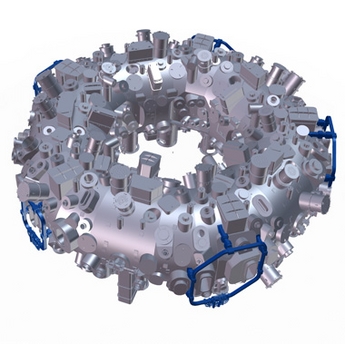The USA is investing over $7.5 million in the construction of the Wendelstein 7-X fusion device at Max Planck Institute for Plasma Physics in Greifswald, Germany.

In the three-year project, starting in 2011, scientists from the fusion institutes at Princeton, Oak Ridge and Los Alamos are contributing auxiliary magnetic coils, measuring instruments and planning of special sections of the wall cladding for equipping the German fusion device. The Wendelstein 7-X device is one of a total of nine projects in the Innovative Approaches to Fusion programme of the USA Department of Energy.
The Wendelstein 7-X fusion device, currently under construction, will, once completed by the world’s largest and most modern device of the stellarator type.
In the German-American cooperation programme Princeton Plasma Physics Laboratory is making five auxiliary coils for Wendelstein 7-X. The window-size coils, to be installed on the outer casing of the device, are to help precise setting of the magnetic fields at the plasma edge. They ensure that the outer contour of the plasma exactly conforms to the required shape. They are to be delivered at the end of 2012.
Oak Ridge National Laboratory is taking on design of the scraper elements for the plasma edge of the device. The new components being introduced into planning are to enhance the device’s performance in continuous operation and ensure greater experimental flexibility. The water-cooled plates have to withstand heavy heat loads of up to 20 MW per square metre. This will make it possible to protect wall sections across which the hot plasma will move to its final position in the first 30 seconds of the 30-minute plasma discharges. The sophisticated technology study is to be ready by the end of the year.
Finally, Los Alamos National Laboratory will provide the Wendelstein programme with measuring instruments for observing the plasma, including refined infrared diagnostics: “We envision this three-year period”, state the research institutes involved, “as a step toward a robust partnership in the Wendelstein 7-X research programme that will involve physicists and engineers from many U.S. institutions in research that will make a significant impact on the world fusion program.”
The President of the Max Planck Society, Peter Gruss, said he was delighted about the US involvement: “This contribution is testimony to the outstanding scientific performance of the Max Planck Institute for Plasma Physics as well as to the importance of the experimental approach in Greifswald. But it also reflects the great interest of the United States in fusion research.”




